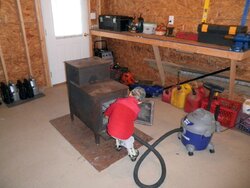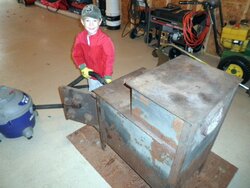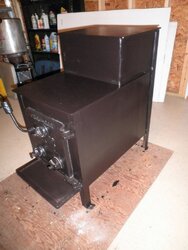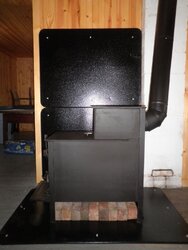The members of our hunting camp finally decided it time to remove the old Atlanta Homesteader wood stove from the camp for safety reasons (we could watch the fire burn, and shouldn't be able to).
I volunteered up this Atlanta Huntsman wood stove for it's replacement once the boy and I finish putting a shine on it. I bought it for 80 bucks in the spring and figured it'd eventually turn into a firechamber for a meat smoker or else a cardboard burner outdoors. Glad to find it a situation where it will be well served as it appears to be a solid unit.
In all, it's in good shape. I will need to reweld a few joints, but otherwise, think it will serve us well after that, a new door gasket, and a good sanding and coat of paint.
Here's the boy giving me a hand getting things started today.


I volunteered up this Atlanta Huntsman wood stove for it's replacement once the boy and I finish putting a shine on it. I bought it for 80 bucks in the spring and figured it'd eventually turn into a firechamber for a meat smoker or else a cardboard burner outdoors. Glad to find it a situation where it will be well served as it appears to be a solid unit.
In all, it's in good shape. I will need to reweld a few joints, but otherwise, think it will serve us well after that, a new door gasket, and a good sanding and coat of paint.
Here's the boy giving me a hand getting things started today.





